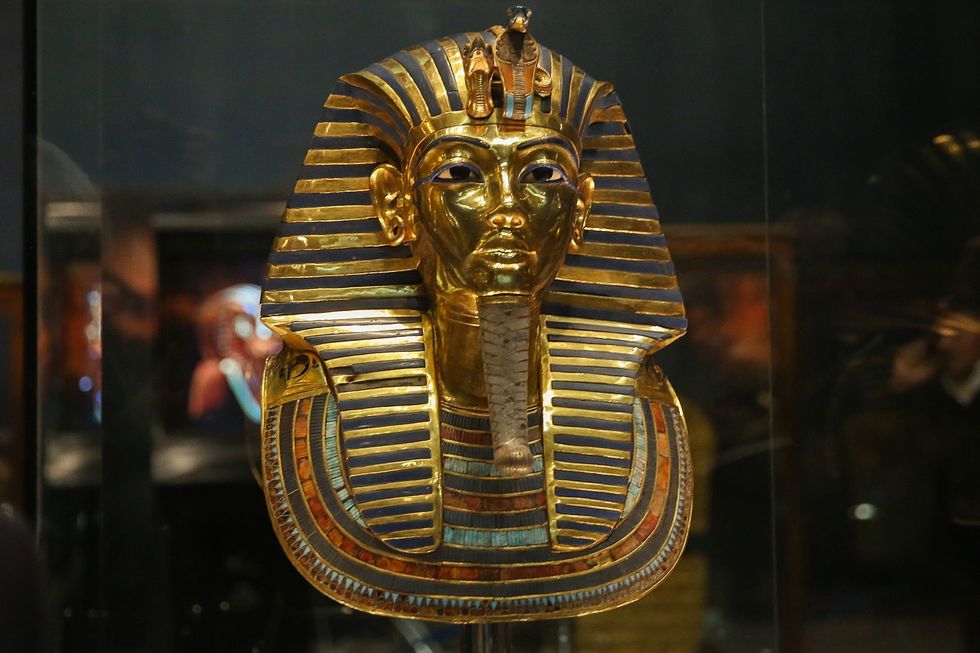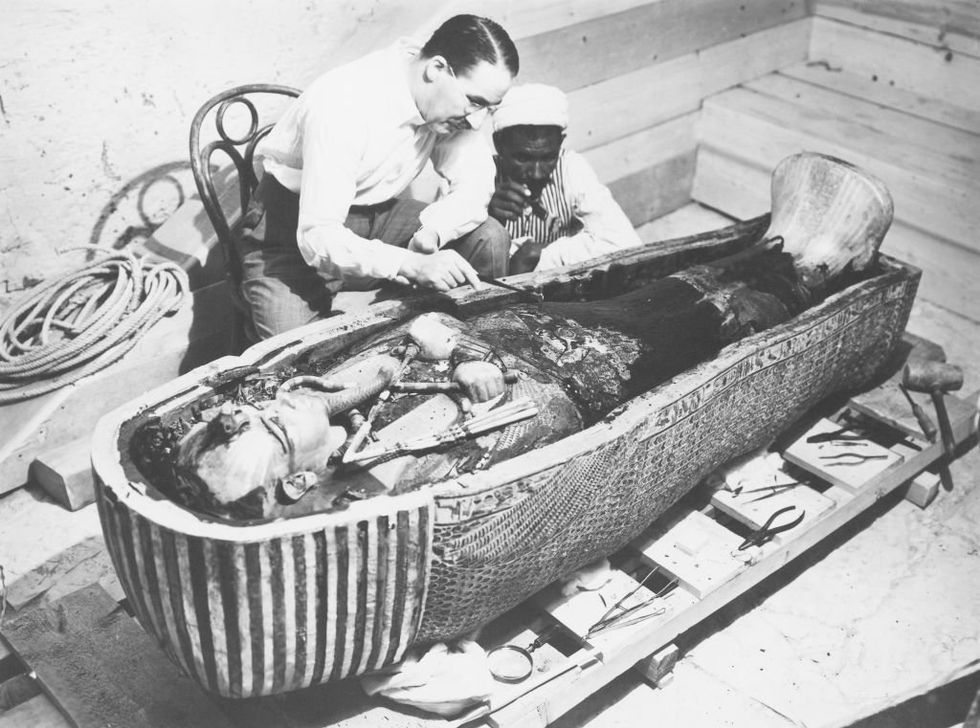Mysterious ancient Egyptian artefact could reveal hidden ritual performed by Tutankhamun

The fragment is said to hold 'significant symbolic meaning'
Don't Miss
Most Read
An ancient necklace discovered with the face of King Tutankhamun on it could have revealed hidden rebirth rituals and demonstrated the loyalty he received from elites.
The artefact was discovered in the Myers Collection at Eton College in the UK, and depicts the king drinking from a white lotus cup, wearing a blue crown with a cobra on it, a wide necklace, bracelets, armbands and a detailed pleated kilt.
According to Mike Tritsch, a PhD student in Egyptology at Yale University, the necklace was not simply a fashion statement - instead, a gift meant to "cement loyalty" and enable powerful officials to sport a symbol that clearly demonstrates their reliance and dependence on the King.
Writing in his study, that is yet to be peer-reviewed, Mr Tritsch said: "With significant symbolic meaning… broad collars can assume a cultic function… the textual appearance of broad collars indicates their purpose in ennobling, rejuvenating, and sometimes deifying the wearer."
TRENDING
Stories
Videos
Your Say
Called ECM 1887, the necklace was not actually found in King Tut's tomb; rather, it was purchased by an Eton College graduate who ultimately donated it back to the college in his will.
Mr Tritsch broke down the importance of the individual items in the necklace, including the blue crown, which is "attributed to kings often being portrayed suckling deities".
"Moreover, the crown was commonly worn during rebirth rituals, as seen in the Opening of the Mouth ritual illustrated in Tutankhamun’s tomb," he added.
The white lotus is said to symbolise procreation and new life, similar to that of the lotus flower.

An ancient necklace discovered with the face of King Tutankhamun could have revealed hidden rebirth rituals and demonstrated the loyalty he received from elites
| GETTYMeanwhile, the act of drinking is supposed to carry strong sexual symbolism. Tutankhamun drinking from the white lotus cup, likely poured by the king's wife, Ankhesenamun, demonstrates their sexual union.
This ritual act also mirrors a Heliopolitan myth, where god Atum generates life through a symbolic act of masturbation and drinking, in turn connecting male and female forces.
Drinking is also said to symbolise King Tut's royal duty to produce heirs. Unfortunately, he was unable to do so.
At the time of his death, aged 18 or 19, King Tut had produced no heirs to the throne, meaning he was the last in his dynasty of pharaohs.
LATEST DEVELOPMENTS
Despite his young age, the young king had around a decade as Egypt's ruler, taking the throne aged around nine.
While his reign was relatively short, King Tut has gone down as one of Egypt's most infamous rulers. One reason behind this is the discovery of his tomb in 1922.
When found by British archaeologist Howard Carter, along with the help of and financial backer Lord George Carnarvon in part, the tomb, which dates back to 1323 BC, was in almost pristine condition.

English archaeologist Howard Carter, along with the help of and financial backer Lord George Carnarvon in part, discovered and examined King Tutankhamun's body a century ago
| GETTYThe pharaoh's body had been stuck to the casket by a hardened, black substance that had been used to protect the body from decay.
During his short life, Tutankhamun married his half-sister, Ankhesenamun, after he became king, but suffered with multiple health issues.
While his cause of death is not known, the fact that his parents were brother and sister, sharing both the same mother and father, is commonly understood to be at least in part responsible for his health decline.
Our Standards: The GB News Editorial Charter










